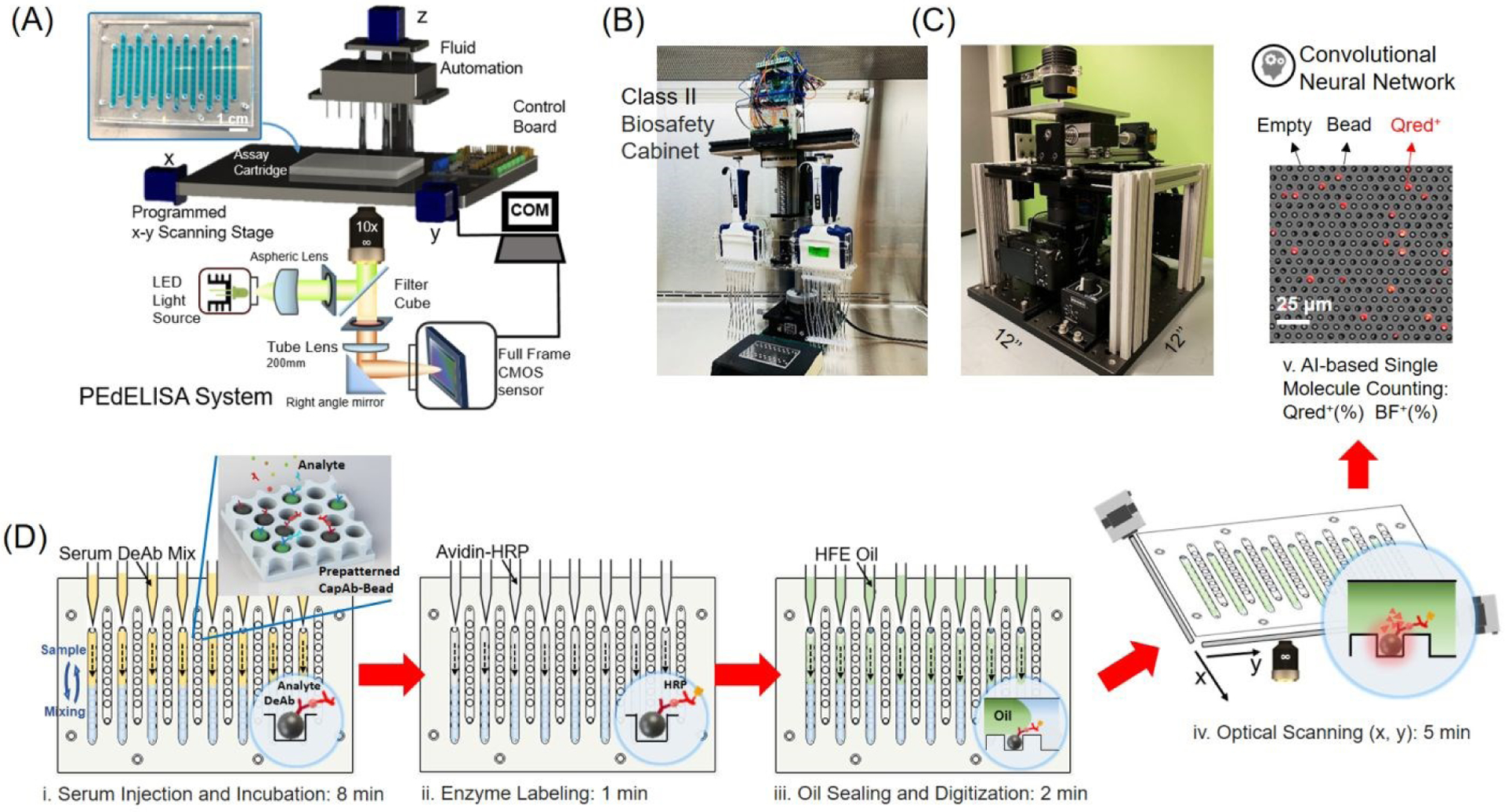Figure 1.

PEdELISA microarray assay platform for COVID-19 patient cytokine storm profiling. (A)-(C) Schematic and photo image of the assay system in a biosafety cabinet. The platform comprises a cartridge holding a disposable microfluidic chip (inset), an automated fluidic dispensing and mixing module, and a 2D inverted fluorescence scanning module. Each channel of the chip has 8 circular biosensor patterns formed by a cluster of 66,724 arrayed microwells. Each biosensor pattern detects one of four target analytes. (D) The 5-step assay procedure includes (i) automated injection and subsequent on-chip mixing of serum and a detection antibody solution with capture antibody-coated magnetic beads pre-deposited in microwell arrays, which is accompanied by a short incubation (9-min) and followed by washing (2-min), (ii) HRP enzyme labeling (1-min), followed by washing (5-min), (iii) fluorescence substrate loading and oil sealing (2-min), (iv) x-y optical scanning and imaging (5-min), and (v) Data analysis using a convolutional neural network-guided image processing algorithm (4sec/image) for high throughput and accurate single-molecule counting (5–7min). The total sample to answer time is around 30 min for 8 samples in 4-plex. Both the fluorescence substrate channel (Qred CH) and brightfield channel (BF CH) are analyzed to calculate the average number of immune-complexes formed on each bead surface.
